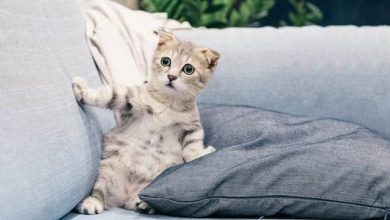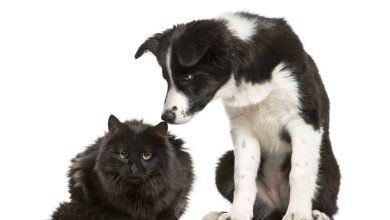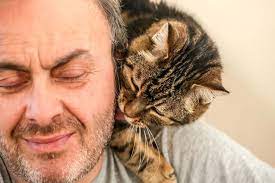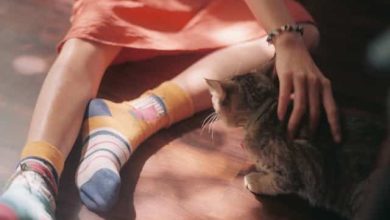Heterochromia Eyes in Cats
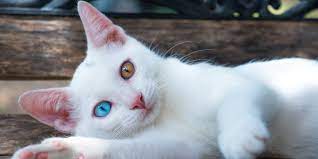

Heterochromia is a fascinating condition that affects the coloration of the iris, giving cats unique and captivating eyes. While most cats have eyes of the same color, those with heterochromia possess eyes that are different in color. This condition can be found in various cat breeds, and it adds to the charm and beauty of these feline companions.
Understanding Heterochromia Eyes in Cats
Types of Heterochromia
Heterochromia in cats can be classified into three main types: complete, sectoral, and central heterochromia. In complete heterochromia, each eye has a distinctly different color, such as one eye being blue and the other golden. Sectoral heterochromia refers to the presence of two colors within the same eye, creating a captivating pattern. Central heterochromia occurs when the iris has two different colors, with the inner portion displaying a different shade compared to the outer portion.
Causes of Heterochromia in Cats
Heterochromia in cats can have various causes. One common cause is genetics. Certain breeds, such as Turkish Van, Turkish Angora, and Siamese cats, are more prone to developing heterochromia due to their genetic makeup. Additionally, acquired heterochromia can result from injuries, inflammations, or other eye-related conditions. In some cases, heterochromia can be a sign of an underlying health issue, requiring veterinary attention.
Recognizing Heterochromia in Cats
Physical Appearance
Identifying heterochromia in cats is relatively straightforward. Observe the eyes closely and look for a difference in color between the two eyes or within the same eye. One eye may be blue, while the other could be green, amber, or golden. The intensity of the colors can vary, creating a stunning and unique appearance.
Behavioral Patterns
Aside from the physical appearance, heterochromia in cats may be associated with certain behavioral patterns. Cats with heterochromia are not necessarily affected in their behavior or vision due to the condition. However, individual cats may exhibit distinctive characteristics that make them even more captivating. Some heterochromatic cats are known to have charismatic and playful personalities, which only adds to their appeal.
Famous Cats with Heterochromia
Heterochromia has caught the attention of many people, and there are several famous cats with this unique trait. One such example is “Odd Eye,” a white cat with one blue eye and one green eye, who gained popularity on social media platforms. Another well-known heterochromatic cat is “Bowie,” named after the famous musician David Bowie, who also had different-colored eyes. These feline celebrities have captivated the hearts of cat lovers worldwide and become symbols of uniqueness and beauty.
Health Concerns and Considerations
In most cases, heterochromia in cats is a benign condition that does not pose any health concerns. However, it is essential to monitor the cat’s eyes regularly for any signs of discomfort, such as redness, excessive tearing, or squinting. If any abnormalities are observed, it is advisable to consult a veterinarian to rule out any underlying health issues or eye conditions.
Genetic Factors and Breeding
Heterochromia can have a genetic component, especially in certain cat breeds. Breeders who wish to produce heterochromatic kittens should carefully select breeding pairs with the desired traits. However, it is crucial to note that breeding solely for heterochromia may increase the risk of other genetic health problems. Responsible breeding practices, including genetic testing and health screenings, should always be followed to ensure the well-being of the cats and their offspring.
See also: Why Does My Cat Bite My Legs?
Treatment and Management of Heterochromia in Cats
As heterochromia is generally a harmless condition, there is no specific treatment required. However, regular veterinary check-ups are essential to monitor the cat’s overall eye health and detect any potential issues early on. It is crucial to maintain good eye hygiene by gently wiping away any discharge or debris that may accumulate. If any concerning symptoms arise, such as eye irritation or vision problems, immediate veterinary attention should be sought.
Frequently Asked Questions (FAQs) about Heterochromia Eyes in Cats
Here are the most FAQs about Heterochromia Eyes in Cats:
Can heterochromia affect a cat’s vision?
No, heterochromia itself does not affect a cat’s vision. However, if a cat experiences any eye-related discomfort or vision problems, it is essential to consult a veterinarian for a thorough examination.
Is heterochromia common in certain cat breeds?
Yes, heterochromia is more commonly found in certain cat breeds such as the Turkish Van, Turkish Angora, and Siamese cats. However, it can occur in cats of any breed or mix.
Can heterochromia develop in cats as they age?
Heterochromia is usually present at birth or develops during early kittenhood. Once the eye color has stabilized, it is unlikely to change with age.
How can I prevent heterochromia in my cat’s offspring?
Preventing heterochromia in offspring requires careful selection of breeding pairs. Breeders should consider the genetics of both parents and avoid pairing cats with a high likelihood of passing on the condition or other health problems.
Can heterochromia be a sign of an underlying health issue?
In some cases, heterochromia can be associated with an underlying health issue or eye condition. If you notice any unusual symptoms or changes in your cat’s eyes, it is best to consult a veterinarian for a proper evaluation.
Conclusion
Heterochromia eyes in cats are a captivating phenomenon that adds to the unique charm of these feline companions. The different colors and patterns in their eyes create an intriguing visual appeal, making them stand out among other cats. While heterochromia is typically harmless, it is essential to monitor the cat’s eye health and seek veterinary attention if any concerns arise. Remember, the beauty of heterochromia lies not only in the unique appearance but also in the wonderful personalities and companionship these cats provide.

